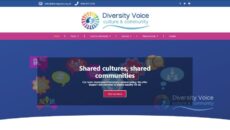There are many purposes of a website, such as presenting information to the public, selling products via an online store, or simply advertising. Whatever the reason for its existence, in most cases the more people that use a website the better it can perform its job.
Using this logic, it makes sense that a website should be as accessible as possible, to as many people as possible.
Disabled Users
By law, new buildings have to include a minimum level of accessibility for disabled people. Features such as wheelchair ramps, access lifts and disabled parking spaces are essential when designing the building. Because of the Disability Discrimination Act (DDA), websites also face the task of being non-discriminative to disabled users.
Screen readers allow users with visual impairments to experience websites by reading the content to them. To enable these readers to be as effective as possible, developers should ensure textual equivalents are provided for as many elements on the page as possible. Equally, text and images should be enlargeable, and important aspects such as links should be differentiated from other text (for example by being underlined) so that colour blind users find it easier to notice them. Links and buttons should be made as large as possible, meaning those with visual or physical disabilities do not have to be as precise with their clicking.
For users with hearing problems, closed captioning should always be provided alongside any audio-related content. Alternatively, a version with sign language could be provided.
Finally, users who are susceptible to seizures will need adequate warning. Content that may put them at risk should be optional.
In a commercial environment, providing inadequate accessibility to a website is a disaster as it is denying a large source of possible revenue. A well-designed site will look to address the issues identified above, but without decreasing the quality or usability for non-disabled users.
Multiple Browsers
Of course, there are other aspects of website accessibility to consider. Statistics for the UK in February 2012 show that Microsoft Internet Explorer is used by 39.61% of Internet users, Google Chrome by 27.42%, and Mozilla Firefox by 19.77%. As all developers know, different web browsers interpret code differently – and these browser usage stats illustrate how wrong it would be to focus on simply one when designing a site. A well-designed site will look to function and appear the same in all browsers, and where not possible, appear and function in an alternative yet professional way.
Mobile Web
More and more websites are being viewed through mobile devices. Stats show that global internet usage through mobile devices has increased from 4.3% February 2011 to 8.5% February 2012. Modern, popular websites should look to create mobile versions of their webpages that are quicker to load and more appropriate to use, lest they isolate this increasing segment of the market.
To summarise, a website should always be as accessible as possible. Addressing issues faced by disabled users not only improves their web experience, but also demonstrates the site owner’s social responsibility. The enhanced reputation that comes from this could lead to more visitors to the site. Additionally, being as accessible as possible will help to satisfy existing and future legal requirements, and lower the risk of the site owner being accused of discrimination.
OUR PORTFOLIO










